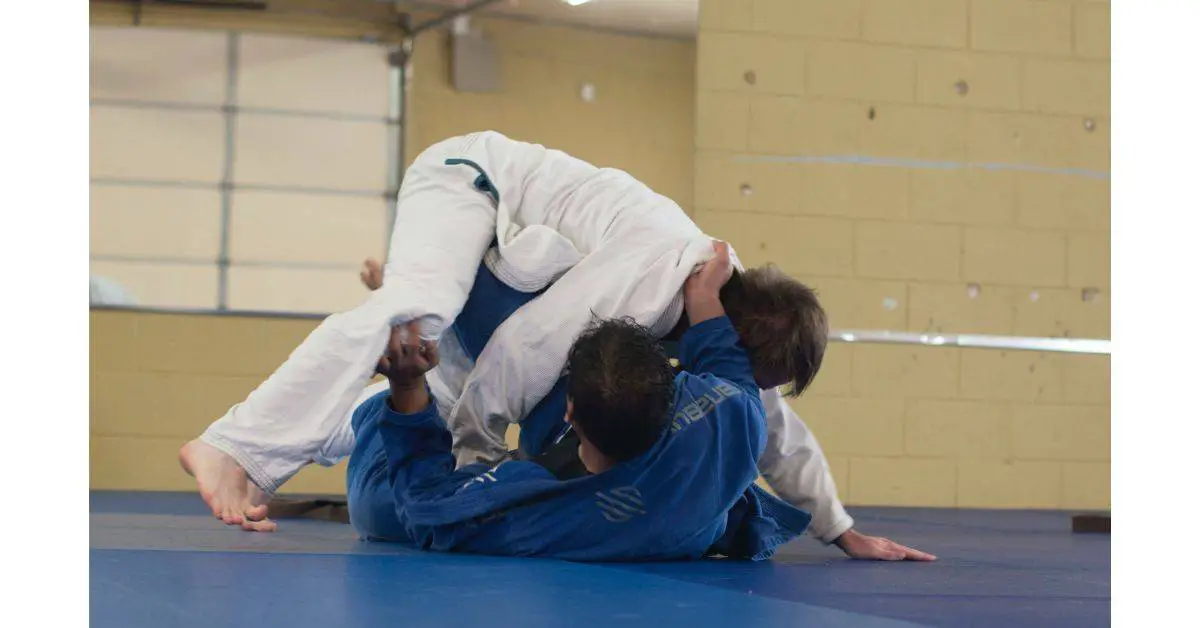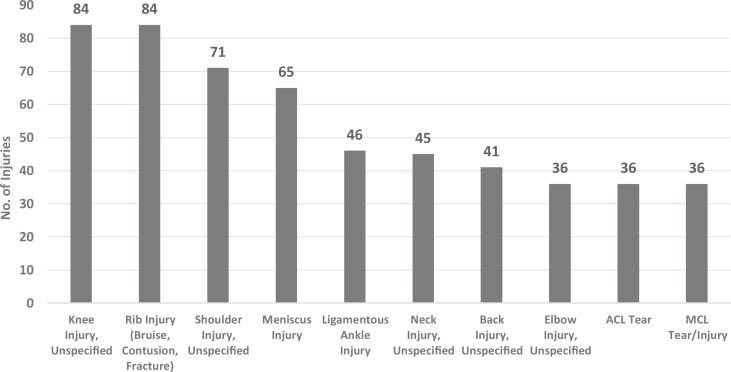Training in any sport—can be dangerous. As a result, many individuals avoid them altogether. While that may ensure they avoid injuries in these sports, it also means they won’t enjoy the benefits and results they grant. One of these sports is Brazilian Jiu-Jitsu, or BJJ; let’s examine whether it’s safe.
BJJ is a relatively safe martial art compared to other striking-focused ones. That said, because it includes chokes and submissions, it can still provide some harm or injuries in its training. According to a study, the most common injury spots are the back, knees, arms, feet, and the hands.
So, as you can see, nothing is 100% safe. Some may think that martial arts, such as Judo or boxing, are safer. However, that’s inaccurate. Every fighting style will present potential harms and injuries because their purpose is to teach others how to fight fiercely.
Similarly, BJJ’s purpose is also to teach people self-defense. As such, its training will include the teachings of effective and practical fighting techniques, such as many chokes and submissions.
These are, as you can imagine, harmful. Because of their effectiveness, it’s not uncommon to see trainees push their pain limits only to end up injuring themselves; that is the primary danger in martial arts training.
Later on, I’ll explain how knowing when to tap out and stop the demonstration or fight—is crucial in avoiding injuries. In the training itself, you will lose. You will need to tap out; so, don’t hesitate to do so.
Before continuing, I encourage you to read an article of mine on the best ways to train Brazilian Jiu-Jitsu at home. If you want to save money by lowering the rate in which you attend fighting classes, you may want to incorporate home-exercises. So, do check it out for more details.
The most common injury spots in BJJ
Like any other martial art, Brazilian Jiu-Jitsu presents potential risks and injuries to the trainees. As a result, knowing the most common ones may help you in avoiding them in the long-term. So, here are the most common injury spots in BJJ:
- Back
- Knee
- Arm/Elbow
- Foot/Toes
- Hand/Fingers

According to a study that reviewed extended amounts of practice time in over 140 participants, these are the most common spots. If you’ve attended a class once or twice, you most likely can imagine how these body parts are at constant risk in everyday training.
Now that you know your knees may potentially get injured, you can avoid knee-injuries by looking out for them. Whenever you notice a situation that can go south, you seize it. Simple as that, no questions asked.
If you won’t look out for yourself, who will? You must be the one that stops exercises whenever you think they’re out of control. Of course, don’t let that stop you from learning and experiencing new drills. And still, pay attention to your body; listen to it.
To clarify, I’m not suggesting that martial arts are the safest activity you can do; because they are not. Instead, I’m presenting the most common Brazilian Jiu-Jitsu injury spots – so you’ll be able to avoid them in the near and far future.
After all, avoiding injuries will boost your progression rate by plenty. If you want to know what the best tips to boost your BJJ progression rate are, ensure to follow the link to an article of mine on the topic.
How common are injuries in BJJ?
The best and most accurate way we can answer this question is by turning into a survey of over 1000 BJJ practitioners. This survey, which is now a full-on study, examined the common patterns of injuries amongst Brazilian Jiu-Jitsu practitioners. Here are the results.
Within a 3-year period, 2 out of 3 BJJ trainees suffered an injury which led them to be absent from training for at least 1-week. Meaning, that 33% of trainees didn’t suffer a single serious injury in a period of 3-years. As such, Brazilian Jiu-Jitsu is a rather safe martial art.
Of course, self-diagnosed injuries are extremely common in BJJ and all other martial arts. For that reason, if we were to count them, I’m sure the statistics would’ve been 3 out of 3 in a single month training period.
But, that’s not the case. Self-diagnosed injuries don’t provide as much permanent harm. In fact, we can usually keep training with them.
Now, imagine how much more danger a martial art that includes striking presents to its trainees. BJJ is a grappling-based fighting style. That means that it uses chokes and submissions rather than punching and kicking.
Therefore, concussions won’t be nearly as common as in martial arts, such as boxing, kickboxing, Muay-Thai, and even MMA. If we were to calculate the risks of partaking in each martial art, BJJ would be on the bottom of the list (it’s a safe sport).
If you want to learn more about whether BJJ is effective for self-defense, ensure you follow the link to an article of mine on the topic.
Now, for the fun part of the article, here are the five best tips to ensure you’ll be avoiding as many injuries as possible in your BJJ journey.
Without further ado, let’s see what they are.
#1 – Tap out whenever you feel danger
The first tip we’ll go over is one of great significance. Also, it’s a skill you develop when you train. As such, understanding it when you’re a beginner will be more difficult, as you won’t understand when to use it.
Tapping out is one of the fundamental skills every BJJ practitioner needs to know. If you give in too early, you may not enjoy the exercise as much, when you could’ve turned things around.
On the other hand, you may push your physical boundaries and tap out too late. In that case, you’re more likely to get injured.
So, get a feel of when tapping out is the safest option. If you don’t think you can win the spar or drill, don’t continue fighting, as you’re not as likely to win anyway. Keeping yourself injury-free is the #1 priority.
#2 – Train up to 3 times per week
The second tip is to avoid overtraining. Your muscles need time to recover. If you constantly use them and push their limits, they’ll eventually tear and be required time to repair themselves back. That happens, as you may know, in your sleep.
As a result, getting enough sleep is a tip people filled entire libraries about. In short, ensure you’re allowing your body enough time to rest and recover.
Read more about how much you should sleep from a trustable and qualified source by following the link.
Likewise, training for more than 3 times per week will mean that you have two consecutive workouts, day after day. So, you won’t allow your body enough time to recover.
I’m a big believer that even a single BJJ session per week is enough to learn the craft in the long term. That said, you can train up to 3 times per week, on non-consecutive days. Hence, training on Sunday and on Monday—will cause overtraining.
#3 – Know the dangers of intense sparring
BJJ training will involve some sparring sessions. Sparring, or rolling, is the act of simulating a fight in training. In boxing, for instance, it’s when two trainees fight in either a single or several rounds boxing fight.
In BJJ, rolling is when you roll, literally, with another trainee. Thus, it’s one of the most effective exercises to boost your progression rate, as it’s the closest you’ll get to a real fight.
Eventually, sparring is also the exercise that presents the most potential injuries, as you’re fighting against someone who wants to beat you. Not only that, but you also want to win too. So, forces will clash, and you’ll naturally be more aggressive.
That’s understandable and even good. However, when egos start to clash, the dangers of training rise. As a result, ensure you allow yourself to room to learn, even when sparring.
If you want to learn about the benefits of learning martial arts, ensure to follow the link to an article of mine on the topic.
#4 – Consume healthy and nutritious foods
The next tip we’ll discuss is to eat properly. As with sleep, we can fill entire libraries about everything related to nutrition. So, let’s summarize this topic, so you’ll know what to do next.
As you can guess, I’m not a qualified nutritionist. Also, I don’t aspire to be one. Thus, I don’t want to recommend anything from my personal experience, although I’ve been through 7 years of constantly playing with my diet to examine when my body reacts the best.
Here’s a quote from a study on healthy eating:
Choose fish, poultry, beans, and nuts; limit red meat and cheese; avoid bacon, cold cuts, and other processed meats. Eat a variety of whole grains (like whole-wheat bread, whole-grain pasta, and brown rice). Limit refined grains (like white rice and white bread).
SOURCE
Of course, this is the tip of the tip of the iceberg. There’s so much more to learn about what to consume to maximize your results.

Eventually, eating according to your fitness goal will help you achieve that fitness goal faster. If you want to lose body fat, for example, you’ll need to consume less than what your body burns every day.
On the other hand, if you want to grow your muscle mass, you must consume more than what your body burns. This is the tip of the tip of the iceberg, again. So, I encourage you to research the topic even more to find out how to maximize your BJJ progression rate with nutrition.
#5 – Drink at least a single cup of water
The benefits of drinking enough water—have been proven by medical publications time and time again. It’s no secret that consuming insufficient amount of water will result in harmful consequences, sometimes even for more than a week.
Thus, drinking enough water in your workout—is a must for those training in BJJ. In the training itself, you’ll sweat, and a lot. As a result, you must drink water, to retain a balanced number of fluids in your body.
Other than the common injury spots I’ve mentioned in this article, there’s also the risk of dehydration. Eventually, insufficient amount of water will cause dehydration—which will set you a few steps back in your journey.
Here’s how much you should drink, according The U.S. National Academies of Sciences, Engineering, and Medicine determined that an adequate daily fluid intake is: About 15.5 cups (3.67 l) of fluids a day for men. About 11.5 cups (2.72 l) of fluids a day for women. (Source)
Final words
To summarize this article, BJJ is a safe sport. Learning it will provide countless mental and physical benefits, such as increased confidence and reduced stress. As a result, if you want to experience some of these, you must stay consistent and dedicated in your training.
Every sport will provide some risk for injuries. These potential injuries are a natural cause of martial arts. Learning any martial art has some risk because they teach people how to use self-defense.
So, as you can imagine, to learn self-defense, you must also learn the effective techniques. Additionally, the best fighting styles also include sparring sessions, which provide the most risk to the participants, as they’re the closest to a real fight training can offer.
If you enjoyed reading this article, I encourage you to follow the link to learn more about the best grappling mats for your money. Buying a high-quality mat is a must if you want to study BJJ at home—whenever you want.


